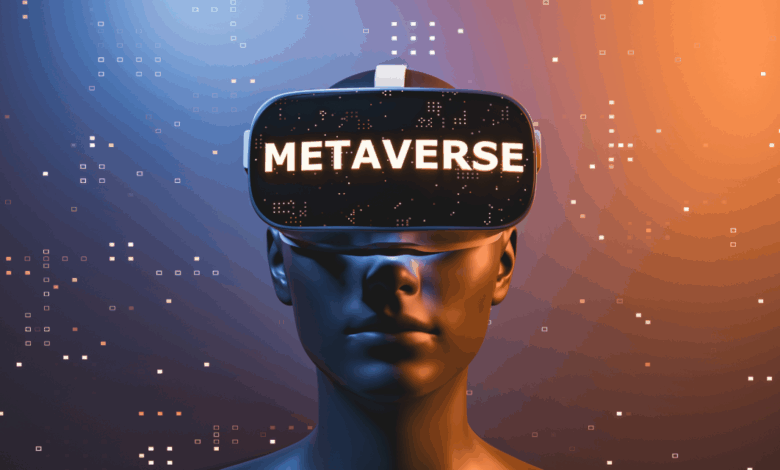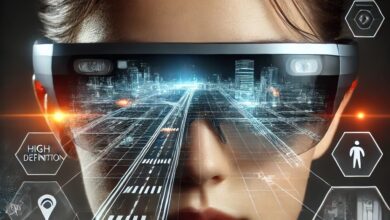Navigating the Metaverse After the Hype Fades

The deafening roar of the metaverse hype train has quieted. Headlines that once screamed about a digital revolution and a trillion-dollar opportunity have been replaced by sober analyses of quarterly earnings reports and corporate restructuring. The speculative bubble, inflated by grandiose promises and massive investments, has indeed deflated. For many, this signals failure. But for those who look closer, this is not an obituary; it is a necessary and healthy recalibration. The question on everyone’s mind is: “The metaverse hype has crashed, so what happens now?”
The answer lies in understanding that the metaverse was never a destination we would arrive at in 2023 or 2024. It is a direction of travel a slow, complex, and iterative evolution of the internet itself. The current “crash” is merely the shedding of unrealistic expectations, allowing the foundational, practical work to begin in earnest. This article will serve as your guide to the post-hype metaverse, exploring why the hype faded, the tangible progress happening beneath the surface, and the concrete opportunities that lie ahead.
A. Deconstructing the Great Metaverse Hype Cycle
To understand the present, we must first look back at the recent past. The hype cycle, particularly from late 2021 through 2022, was driven by a potent mixture of technological promise and speculative fervor.
A. The Facebook Catalyst: When Mark Zuckerberg rebranded Facebook to Meta in October 2021, it was a seismic event that brought the term “metaverse” into the global mainstream. Backed by a commitment to invest over $10 billion annually into Reality Labs, its metaverse division, Meta single-handedly convinced the world that this was the next frontier. This move pressured every other tech giant to announce their own metaverse strategies, creating a bandwagon effect.
B. The NFT and Crypto Frenzy: The metaverse concept became intertwined with the cryptocurrency boom. Virtual land plots in platforms like Decentraland and The Sandbox sold for millions of dollars. The idea of digitally scarce assets, verifiable ownership through blockchain, and a creator-driven economy (Web3) became a core narrative of the open metaverse vision, attracting massive investment and media attention.
C. Pandemic-Driven Digital Adoption: With people physically isolated during the COVID-19 pandemic, digital interactions became more crucial than ever. Platforms like Zoom and video games like Fortnite and Roblox, which hosted virtual concerts and events, offered a glimpse into a future where we socialize, work, and play in persistent online spaces. This accelerated acceptance of digital lives made the metaverse vision seem more immediate and plausible.
The hype crashed when these grand visions collided with reality. The technology wasn’t (and still isn’t) ready for a seamless, immersive experience. VR headsets remained clunky, expensive, and niche. The graphic fidelity of most virtual worlds was underwhelming, often compared to dated video games. Beyond speculation, compelling use cases for the average consumer were scarce. Furthermore, macroeconomic factors like rising interest rates dried up the cheap capital that was fueling speculative projects, leading to a “crypto winter” that directly impacted many metaverse initiatives.
B. The Silent Evolution: Key Areas of Tangible Progress
While the spotlight has shifted, the work has not stopped. The evolution continues in labs, enterprise software, and incremental hardware improvements. The focus has shifted from fantastical promises to solving real-world problems.
A. The Enterprise Metaverse is Thriving: This is arguably the most significant and overlooked development. Companies are finding immense value in using metaverse-like technologies for industrial and professional applications.
-
Virtual Prototyping and Digital Twins: Manufacturing giants like BMW and Airbus are creating exact digital replicas (“digital twins”) of their factories and products. This allows them to simulate production lines, train employees on complex machinery in a risk-free virtual environment, and perform maintenance simulations, saving millions of dollars and reducing downtime.
-
Remote Collaboration and Training: Platforms like NVIDIA’s Omniverse are enabling global teams of engineers and designers to collaborate on 3D models in real-time, regardless of their physical location. Medical students are practicing surgeries in VR, and field technicians are being trained to repair equipment through augmented reality (AR) overlays that provide instructions directly onto their field of view.
B. The Hardware March Continues: The path to sleek, affordable, and powerful hardware is a marathon, not a sprint. Progress is being made.
-
VR/AR Headsets: Meta’s Quest 3 and Apple’s groundbreaking Vision Pro have significantly advanced the state of the art. While the Vision Pro is a high-end developer kit, it showcases the future of “spatial computing”—seamlessly blending digital content with the physical world. These advancements trickle down, setting the stage for more accessible devices in the future.
-
Haptics and Wearables: Research into gloves, vests, and other wearables that provide tactile feedback (haptics) is progressing. The ability to “feel” a virtual object is crucial for deep immersion and is a key area of development for the long-term vision.
C. The Interoperability Puzzle: The dream of a single, interconnected metaverse is far off. However, the foundational work on standards is beginning. Organizations like the Metaverse Standards Forum, which includes members from Meta, Microsoft, Adobe, and NVIDIA, are working to create common standards for 3D assets, identity, and payments. This is unglamorous but essential work that will allow different virtual worlds to communicate with each other in the future.
D. The AI Accelerator: The explosion of Generative AI is a unexpected boon for the metaverse. AI is solving some of the core challenges of building immersive worlds.
-
Content Creation: AI tools can now generate complex 3D models, textures, and environments from simple text prompts, drastically reducing the time and cost required to build virtual spaces.
-
Intelligent Avatars: AI is powering the creation of realistic and responsive digital humans and NPCs (Non-Player Characters) that can hold natural conversations, making social and customer service interactions in the metaverse far more engaging.
C. The Future Reimagined: A Realistic Roadmap for the Metaverse
So, what does a realistic path forward look like? The next decade will be defined not by a single metaverse, but by a multitude of interconnected experiences.
A. The Proliferation of “Metaverses”: We will see a ecosystem of specific-purpose virtual spaces rather than one unified world. There will be a metaverse for work (Microsoft Mesh), a metaverse for design and engineering (NVIDIA Omniverse), a metaverse for concerts and events (Fortnite), and metaverses for specific communities and hobbies. Your avatar and digital assets may eventually travel between some of these with varying levels of functionality.
B. The Primacy of Augmented Reality (AR): While VR captures the imagination, AR has the potential to be far more transformative for daily life. Overlaying digital information onto our physical world through smart glasses (once they become as socially acceptable as smartphones) will change everything from navigation and education to retail and social media. This blended reality is a critical component of the long-term metaverse vision.
C. New Business and Social Models: The economic models will evolve beyond land speculation.
-
The Creator Economy: The true potential lies in empowering creators to build experiences, design virtual goods, and earn a living. This requires robust and simple-to-use creation tools and fair revenue-sharing models.
-
Phygital Experiences: The bridge between physical and digital will strengthen. Buying a physical pair of sneakers might unlock a digital version for your avatar. Attending a real-world conference could grant you exclusive access to a virtual after-party with speakers.
D. Challenges and Considerations on the Horizon
The path is fraught with challenges that must be addressed to build a metaverse that is equitable, safe, and sustainable.
A. Privacy and Data Security: An immersive internet will collect unprecedented amounts of biometric data—eye tracking, hand gestures, voice inflection, and even brainwave patterns. Creating robust ethical frameworks and regulations for this data is paramount to prevent dystopian outcomes.
B. Digital Equity and Access: The cost of hardware and the requirement for high-bandwidth internet risk creating a new digital divide. Ensuring the metaverse does not become a luxury for the wealthy is a critical societal challenge.
C. Identity and Moderation: How do we verify identity to prevent harassment and bad actors while also preserving privacy and freedom of expression? Developing scalable, effective moderation tools for immersive 3D environments is a problem that remains largely unsolved.
Conclusion: The Quiet Dawn After the Loud Sunset
The bursting of the metaverse bubble was not a death knell; it was a reality check. It has cleared away the noise, the get-rich-quick schemes, and the hollow marketing, allowing us to focus on what truly matters: building value. The work happening now in enterprise solutions, in hardware labs, in standards bodies, and in AI research is laying the groundwork for a future that is more immersive, interconnected, and productive.
The metamorphosis of the internet into a metaverse is a journey of decades, not years. For creators, developers, and businesses, now is not the time to turn away. It is the time to lean in, to experiment, to build useful applications, and to engage in the crucial conversations about the society we want to build, both in the physical world and the digital ones we are creating. The hype has crashed, and in its place, the real work has finally begun. The future is being built, quietly and diligently, one line of code, one standard, and one virtual prototype at a time.






